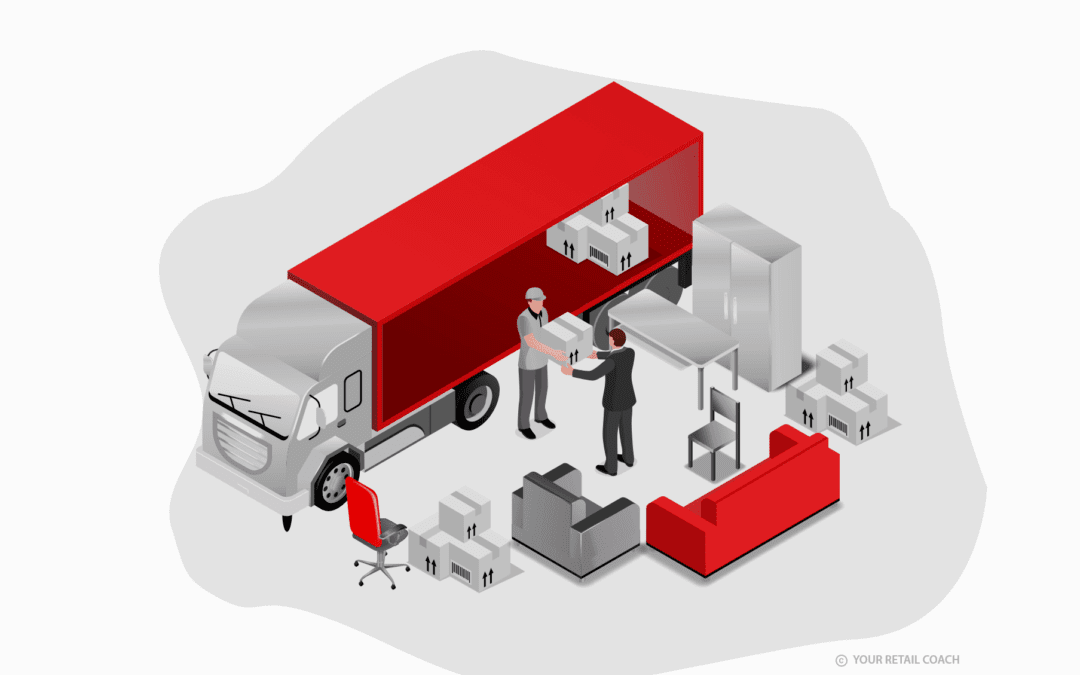Reading Time: About 4 minutes
If you are in the business of furniture retail as a premium or luxury brand, then you must focus on maintaining the same in terms of customer experience as well, as an integral part of your offering.
Customers will often drop by your store to have an experience of the touch and feel of how your offering is premium and one of the best. Thus, if they are paying a visit to your store then it is your business concern to provide them with the best experience or as experts call it in marketing parlance – an ideal customer journey. Customers should have a different experience of exploring your luxury furniture stores in the backdrop of the reputation that your furniture brand features in the premium segment. They should feel that the premium price you are charging from them is justified and your merchandise as worthy for the tags. As a key furniture business strategy, customers need to see and experience the value of your offering in every aspect including customer journey. As a premium furniture brand, your business must deliver a premium customer experience.
In this article, we will discuss three key moves which if implemented correctly can create an elevated customer journey and answer how to succeed in furniture sales:
- Lead Management
- Customer Journey Mapping
- Customer Experience Enhancement
Lead Management
As a luxury furniture brand, you need to go a few extra miles to generate new business clientele via lead management. And one of the effective strategies in lead management is credible referrals. The various sources of referrals could be architects, interior designers, or influencers. They can refer your brand to their clients, customers, and followers. This makes lead management a vital element of business development and marketing strategy for furniture businesses.
Albeit informal, being referred by another credible professional or entity serves as a testimony to your brand. Referred customers visiting your store would be already having a positive impression. All you need to do I ensure that this gained head start is transformed into conversion.
The entire process – from lead generation to conversion and retention, needs to be well-crafted so that there are no loopholes. From pre-purchase enquiries to post-sale services, potential customers may have any kind of question. This earmarks the beginning of the customer journey and experience. If the answers are organized and comprehensive, customers are likely to show further interest which can include a store visit. So, when a customer comes in contact with a physical touchpoint, from there on the entire journey needs to be mapped. Customers’ informative and demonstrative needs must be addressed at every step. After the mapping is done, the action plan can be laid down with Furniture SOPs (Standard Operating Procedures).
Customer Journey Mapping
A customer journey map is a visual representation of the step-by-step progression of a customer’s experience with a business enterprise starting from virtual touchpoints like online or offline advertisements to physical touchpoints like store visit, purchases, after-sales support and retention efforts.
Within the context of a retail store, the in-store journey of a customer needs to be emphasized upon. For a luxury furniture retail store, some of the important points to be kept in mind while planning to enhance customer journey are:
- Parking convenience and assistance
- A pleasant store entry and exit experience
- Planned layout, servicescape
- Focus on visual merchandising, and lighting, ambience, music etc.
- Incorporating features to create customer engagement.
- Ensuring customers’ informative and demonstrative needs are addressed at every step.
- Trained and knowledgeable staff
- Hygiene and cleanliness
- Flexibility of payment methods
- Feedback and follow-up
- Store safety and security
Mapping the customer journey (in-store and outside) and incorporating strategies to elevate customer experience along this journey helps you better understand customers’ needs and preferences. It lets you identify the gaps and loopholes in your existing ways of delivering customer service which goes beyond the core product or service you are offering.
Customer Experience Enhancement
Customers do not just buy the product; they also buy the experience. From a luxury furniture brand, customers do have high expectations in terms of the experience being offered to them. As Mari Smith, one of the world’s leading social media thought leaders, said, “Content is king, but engagement is queen, and the lady rules the house!”
Taking the route of digital transformation, there are ways through which you can enhance customer experience. It could be e-catalogues for customers to study on their mobile devices lying on a couch on a weekend or an online presentation you emailed to your leads for them to understand your products and its features before visiting the store.
You can also have a virtual design tool or application using which customers can customize their products from a given set of options. You may tie-up with reputed food chains or FMCG companies and have a food kiosk in your store premises.
Related article: Read our article on one of the luxury furniture stores in Dubai – The Ikea Experience.
Summing up
As a high-end luxury furniture store, you will have to go beyond high-end products and extend your efforts to create a high-end customer experience as well. A good lead management will bring you customers’ interest and footfall but what you do from there is your ball-game. Looking into the future of furniture retail, mapping customer journey and digital transformation strategies could make a remarkable difference to your ability to create conversions.
About us
Your Retail Coach (YRC) is a retail consulting and eCommerce outsourcing company in India offering a wide range of services in retail offline, retail eCommerce and retail omnichannel catering to a multitude of industries.
Our Digital Marketing services are focused to ensure that your business name/website performs well in terms of visibility in the SERPs with the eventual goal of driving relevant web traffic from the popular search engines.







